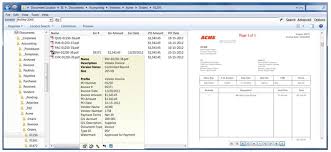The Importance of Implementing a Document Management System Project
In today’s digital age, the efficient management of documents is crucial for businesses to streamline their operations, enhance productivity, and ensure compliance with regulations. One effective solution that organizations can implement is a Document Management System (DMS) project.
A DMS project involves the implementation of software and processes to store, organize, track, and manage electronic documents and images. By centralizing document storage and automating workflows, a DMS project can significantly improve efficiency and reduce the risk of errors associated with manual document handling.
Benefits of a Document Management System Project:
- Improved Organization: A DMS project allows for systematic organization of documents, making it easy to categorize, search, and retrieve information quickly.
- Enhanced Collaboration: With features such as version control and real-time access to documents, team members can collaborate more effectively on projects.
- Increased Security: A DMS project provides secure access controls and encryption features to protect sensitive information from unauthorized access.
- Audit Trail: By tracking document changes and user activity, a DMS project helps organizations maintain compliance with industry regulations and internal policies.
- Cost Savings: Implementing a DMS project reduces the need for physical storage space, printing costs, and time spent searching for misplaced documents.
Key Considerations for Implementing a Document Management System Project:
When embarking on a DMS project, organizations should consider factors such as scalability, integration with existing systems, user training, data migration strategies, and ongoing support and maintenance. It is essential to involve stakeholders from different departments in the planning process to ensure that the DMS project meets the specific needs of the organization.
In conclusion, implementing a Document Management System project offers numerous benefits for organizations seeking to streamline document management processes, improve collaboration among team members, enhance security measures, and achieve cost savings. By investing in a DMS project, businesses can position themselves for success in an increasingly digital world.
Common Questions About Document Management Systems in Project Management
- What is project management documentation?
- What is project document management system?
- How to create a document management system?
- What is an example of document management software?
What is project management documentation?
Project management documentation refers to the collection of documents and records that are created, maintained, and utilized throughout the lifecycle of a project. These documents serve as a roadmap for project managers and team members, outlining key objectives, timelines, resources, risks, and deliverables. Project management documentation includes project plans, schedules, budgets, risk registers, status reports, meeting minutes, and other relevant materials that help ensure the successful planning, execution, monitoring, and completion of a project. Effective project management documentation is essential for keeping stakeholders informed, tracking progress against goals, identifying potential issues early on, and facilitating communication and collaboration among team members.
What is project document management system?
A project document management system is a specialized software solution designed to efficiently store, organize, and manage all project-related documents and information in a centralized repository. This system enables users to easily access, track changes, collaborate on, and securely store various types of project documentation, such as contracts, reports, plans, schedules, and correspondence. By implementing a project document management system, organizations can streamline their document workflows, improve communication among team members, ensure version control, enhance document security, and facilitate compliance with regulatory requirements.
How to create a document management system?
Creating a document management system involves several key steps to ensure its effectiveness and efficiency. First, organizations need to assess their document management needs, including the types of documents to be managed, user access requirements, and compliance regulations. Next, selecting the right document management software that aligns with these needs is crucial. Customizing the system to fit specific workflows and integrating it with existing systems is essential for seamless operation. Proper training for users on how to use the system effectively is also vital for successful implementation. Regular monitoring, evaluation, and updates are necessary to ensure the document management system remains optimized and continues to meet the organization’s evolving needs.
What is an example of document management software?
An example of document management software is Microsoft SharePoint. SharePoint is a popular platform that allows organizations to store, organize, and share documents and information securely. With features such as version control, document collaboration, and workflow automation, SharePoint enables users to manage documents effectively and improve team productivity. Additionally, SharePoint integrates seamlessly with other Microsoft Office applications, making it a versatile solution for businesses looking to implement a comprehensive document management system project.


Leave a Reply